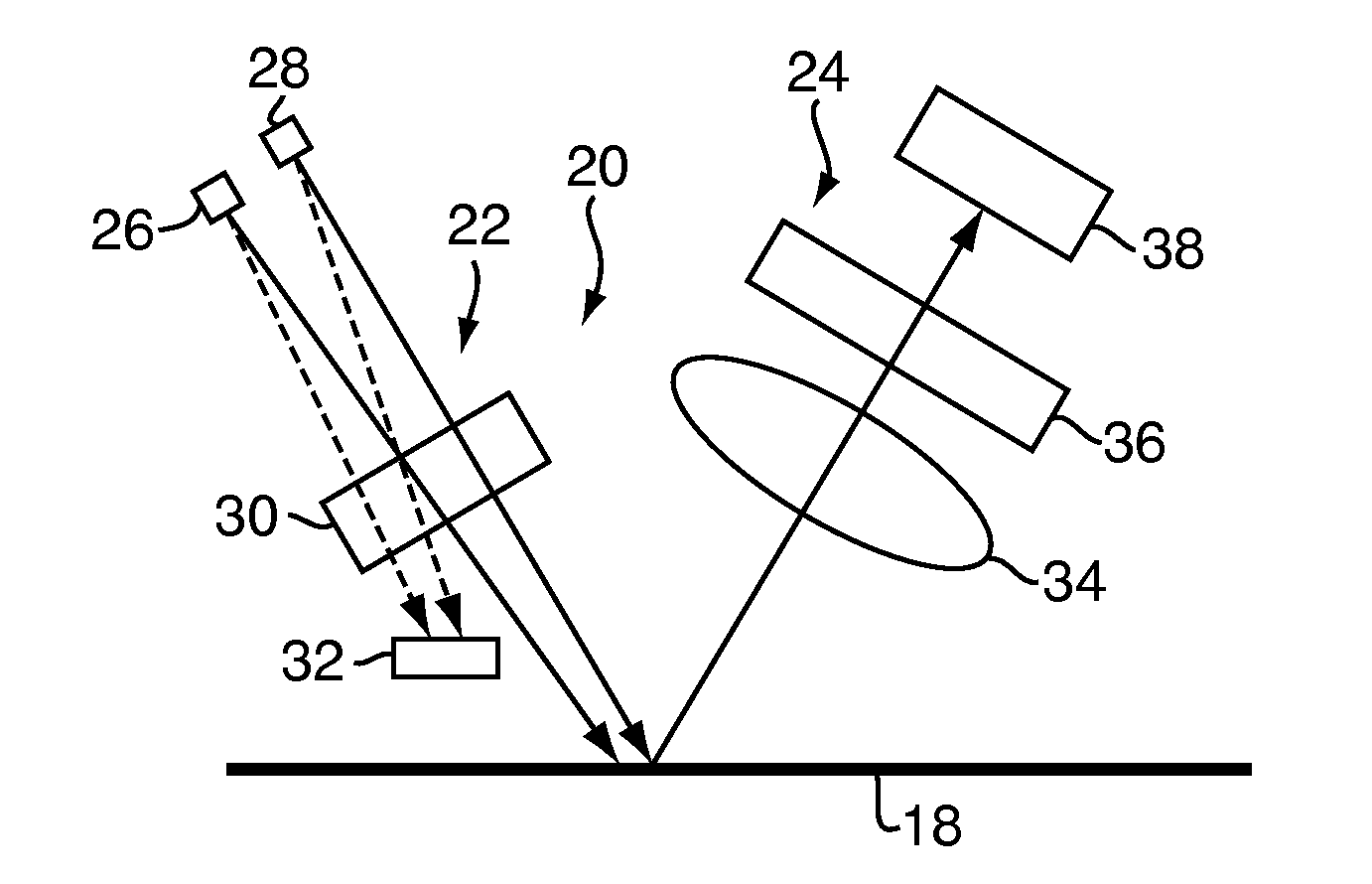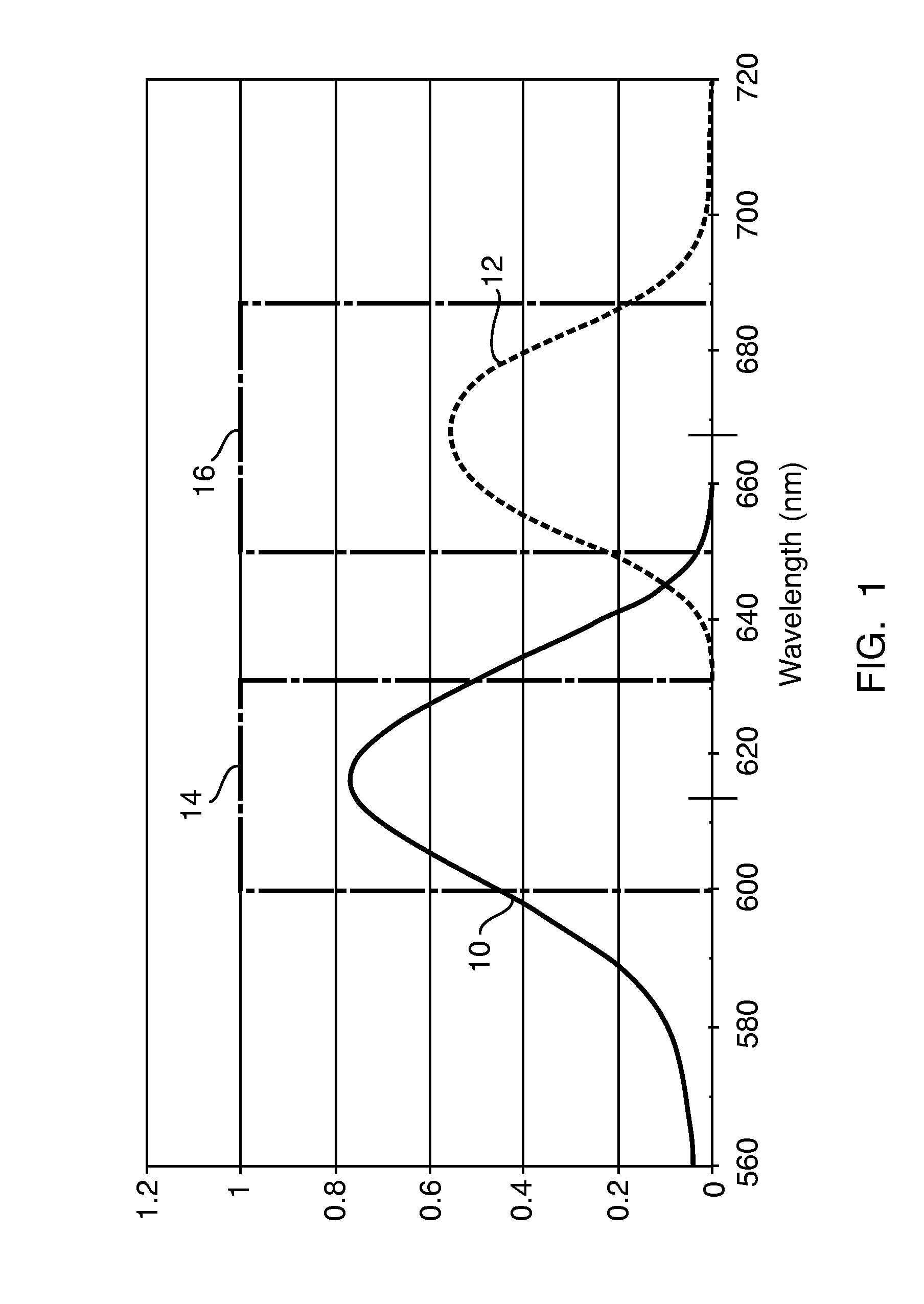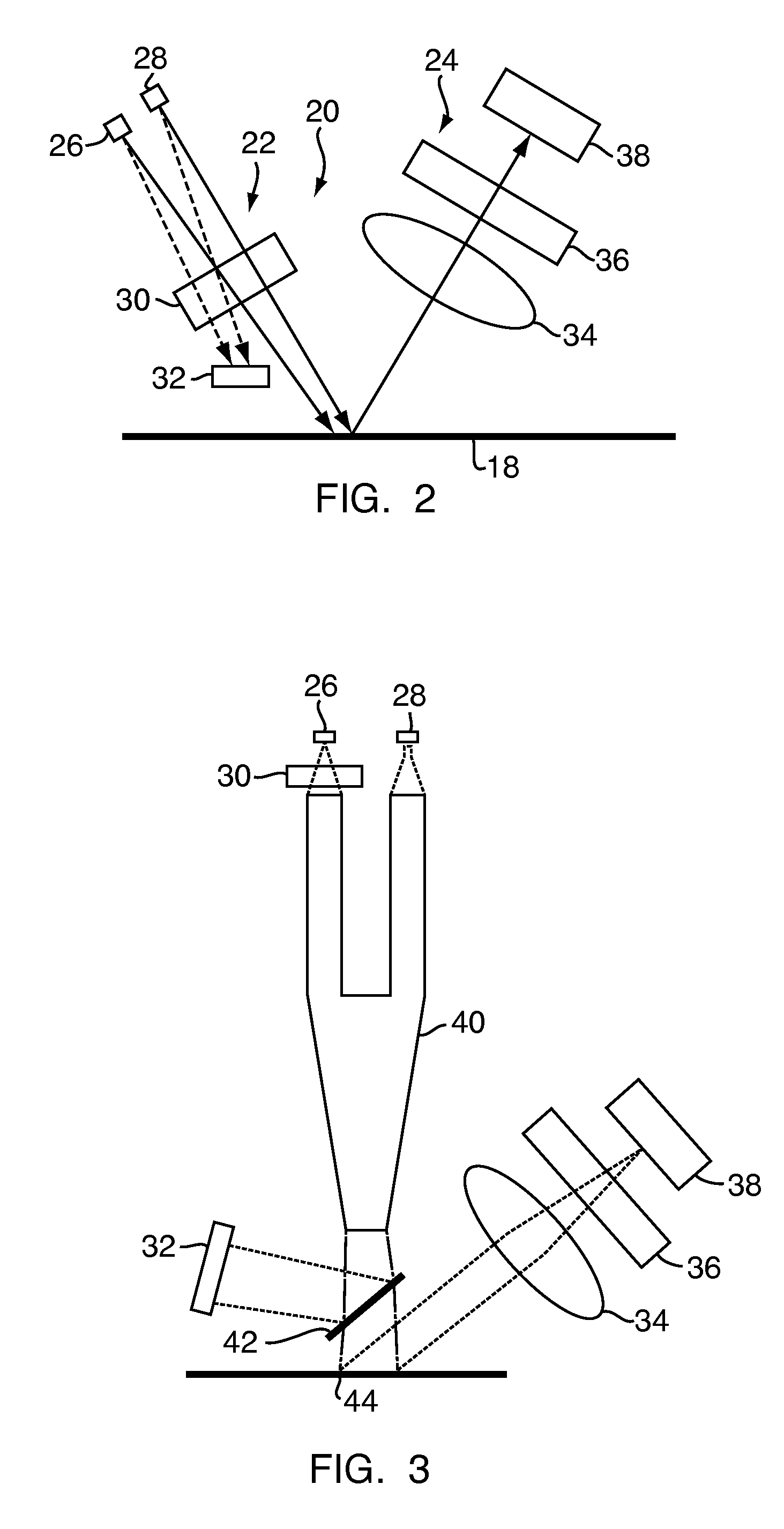Method for the quantitative determination of the concentration of fluorophores of a substance in a sample and apparatus for carrying out the same
a technology of fluorophores and quantitative determination, which is applied in the direction of spectrum investigation, calibration apparatus, color/spectral properties measurement, etc., can solve the problem of insufficient long-term stability of this kind of fluorescence standard, and achieve the effect of reducing the excitation light source and simple construction
- Summary
- Abstract
- Description
- Claims
- Application Information
AI Technical Summary
Benefits of technology
Problems solved by technology
Method used
Image
Examples
Embodiment Construction
[0050]FIG. 1 shows the gradient of efficiency of the excitation light with reference to the wave length by means of a graph 10, as well as the emission characteristic of the corresponding fluorescent light by means of a graph 12. Moreover, a rectangle 14 represents the filter characteristic of the excitation branch or emission branch, while the rectangle 16 represents the filter characteristic of a receiving or measuring branch. When the Stokes shift is small, as shown in FIG. 1, interference filter with very steep edges are preferably used as filters 14 and 16. The interference filters for the excitation branch are preferably dimensioned such that maximum excitation efficiency is reached and the wave length of the excitation light source is within the transmission range of the filter.
[0051]In the embodiment of FIG. 2, reference number 18 denotes schematically a carrier for a sample to be measured or a reflectance standard, respectively. Above this plane 18 an optical module, genera...
PUM
 Login to View More
Login to View More Abstract
Description
Claims
Application Information
 Login to View More
Login to View More - R&D
- Intellectual Property
- Life Sciences
- Materials
- Tech Scout
- Unparalleled Data Quality
- Higher Quality Content
- 60% Fewer Hallucinations
Browse by: Latest US Patents, China's latest patents, Technical Efficacy Thesaurus, Application Domain, Technology Topic, Popular Technical Reports.
© 2025 PatSnap. All rights reserved.Legal|Privacy policy|Modern Slavery Act Transparency Statement|Sitemap|About US| Contact US: help@patsnap.com



